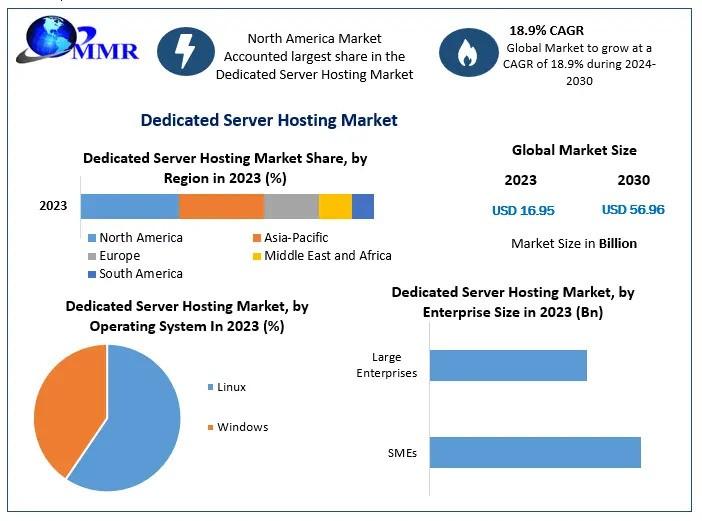Streaming video has become an integral part of our online experiences, whether it’s delivering live events, hosting video-on-demand platforms, or running video conferencing services. Selecting the correct dedicated server is crucial to ensure smooth playback and seamless user experiences. In this article, we’ll guide you through the essential factors to consider when choosing a dedicated server for video streaming, empowering system administrators and business owners to make informed decisions.
Streaming video requires significant bandwidth to deliver content without buffering or interruptions. Assess your streaming needs, estimating the maximum number of viewers and the video quality you wish to provide to determine the required bandwidth for your dedicated server.
Video files can be large and demand substantial storage space. Consider the size and quantity of your video library to ensure your dedicated server has adequate storage capacity to accommodate your streaming requirements.
Understand your target audience and their streaming habits. Analyze the expected traffic volume and the number of concurrent users to determine the server’s capacity and scalability needed to handle peak loads.
Video encoding is resource-intensive, requiring sufficient processing power. Assess the complexity and volume of video encoding tasks to choose a dedicated server with a capable CPU to handle the encoding process effectively.
Look for dedicated servers with high-performance CPUs that meet the demands of video processing and encoding. Consider the number of cores, clock speed, and cache size to ensure smooth video playback.
Sufficient RAM is crucial for smooth video streaming. Choose a server with ample RAM capacity to accommodate the concurrent users and avoid bottlenecks in performance.
Solid-State Drives (SSDs) provide faster access times and higher data transfer rates than traditional Hard Disk Drives (HDDs). Consider SSDs for faster video retrieval and improved streaming performance.
Ensure your dedicated server has high-speed network connectivity with ample bandwidth. Look for servers with multiple network interfaces and consider 10 Gigabit Ethernet (10GbE) ports for optimal data transfer rates.
Choose a dedicated server provider that offers scalable solutions, allowing you to easily upgrade resources as your streaming demands increase over time.
Implement load balancing techniques and consider high availability setups with redundant servers to ensure uninterrupted streaming experiences, even during peak traffic periods or hardware failures.
Opt for a server provider that offers robust monitoring and resource management tools to track server performance, detect bottlenecks, and optimize resource allocation for efficient video streaming.
Look for server management features that streamline administrative tasks and automate routine processes, enabling you to focus on delivering excellent streaming experiences.
Select a dedicated server provider with data centers strategically located near your target audience. This minimizes network latency and ensures faster content delivery.
Check the provider’s network uptime guarantee and their track record in delivering reliable services. Downtime can significantly impact the availability of your streaming content.
Ensure your server provider offers flexible bandwidth options to accommodate fluctuating streaming demands. Look for solutions that prioritize video traffic to guarantee optimal streaming performance.
Video streaming platforms are attractive targets for Distributed Denial of Service (DDoS) attacks. Choose a dedicated server provider that offers robust DDoS protection and implements stringent security measures to safeguard your streaming infrastructure and protect against potential disruptions.
Content Delivery Networks (CDNs) play a crucial role in delivering video content efficiently. They distribute your video files across multiple servers geographically, reducing latency and improving streaming performance.
Research and select a reputable CDN provider that offers a global network of edge servers, optimal bandwidth, and efficient content caching mechanisms. Consider factors such as pricing, coverage, and compatibility with your dedicated server.
Integrate your dedicated server with the chosen CDN provider, configuring caching settings and utilizing their network of edge servers. This will offload content delivery from your server, improving scalability and reducing latency.
Regularly monitor CDN performance using analytics tools provided by the CDN provider. Analyze metrics like bandwidth usage, cache hit rates, and user experience to fine-tune your CDN integration and ensure optimal streaming performance.
Select an operating system (OS) and software stack that best aligns with your streaming requirements. Consider factors such as compatibility, security, and community support when making your choice.
Implement robust security measures such as firewalls, intrusion detection systems, and SSL certificates to protect your dedicated server and streaming content. Regularly update software and apply security patches to stay ahead of potential vulnerabilities.
Perform routine maintenance tasks like disk cleanup, log rotation, and database optimization to keep your dedicated server running smoothly. Regularly update server software, including the OS and streaming applications, to benefit from bug fixes and performance enhancements.
Implement a comprehensive backup and disaster recovery plan to protect your streaming content from data loss. Regularly back up your video files and configurations, storing them in a secure offsite location or utilizing cloud-based backup services.
Consider the costs of dedicated servers, including hardware, bandwidth, and support services. Compare pricing models offered by different providers, such as pay-as-you-go or fixed plans, to find the best fit for your budget.
Strike a balance between the performance requirements of your streaming platform and your budget constraints. Optimize resource allocation and consider scaling options that allow you to increase resources as your streaming demands grow.
Choose a dedicated server provider that offers flexible scaling options and provides cost optimization recommendations. Plan for future growth and consider how easily you can upgrade resources or migrate to more powerful servers when needed.
Thoroughly research and compare different dedicated server providers. Evaluate their track record, customer reviews, and the comprehensiveness of their service-level agreements. Look for providers with responsive customer support and guaranteed uptime.
Choosing the right dedicated server for streaming video is crucial to ensure high-quality playback, seamless user experiences, and scalability for future growth. You can make an informed decision that meets your streaming requirements by considering bandwidth, server configuration, scalability, network performance, CDN integration, server management, and budgeting. As you embark on this process, remember that Virtual Systems offers the best solutions for dedicated streaming servers, delivering top-notch performance, reliability, and support for your video streaming endeavors. Choose Virtual Systems and take your streaming platform to new heights.
https://medium.com/@evgenii.iordatiev/how-to-choose-the-right-dedicated-server-for-streaming-video-5c53da0bae6e






